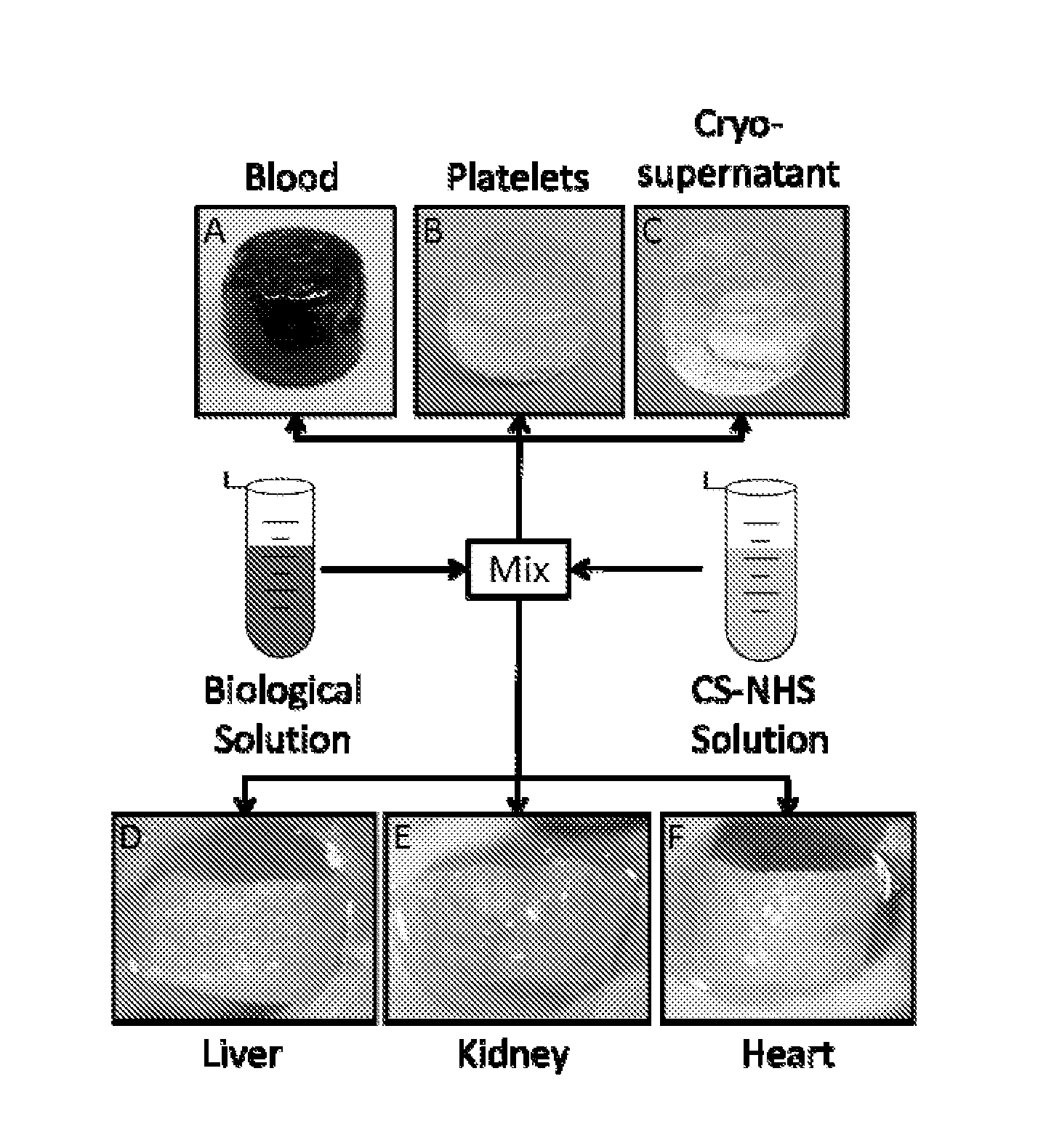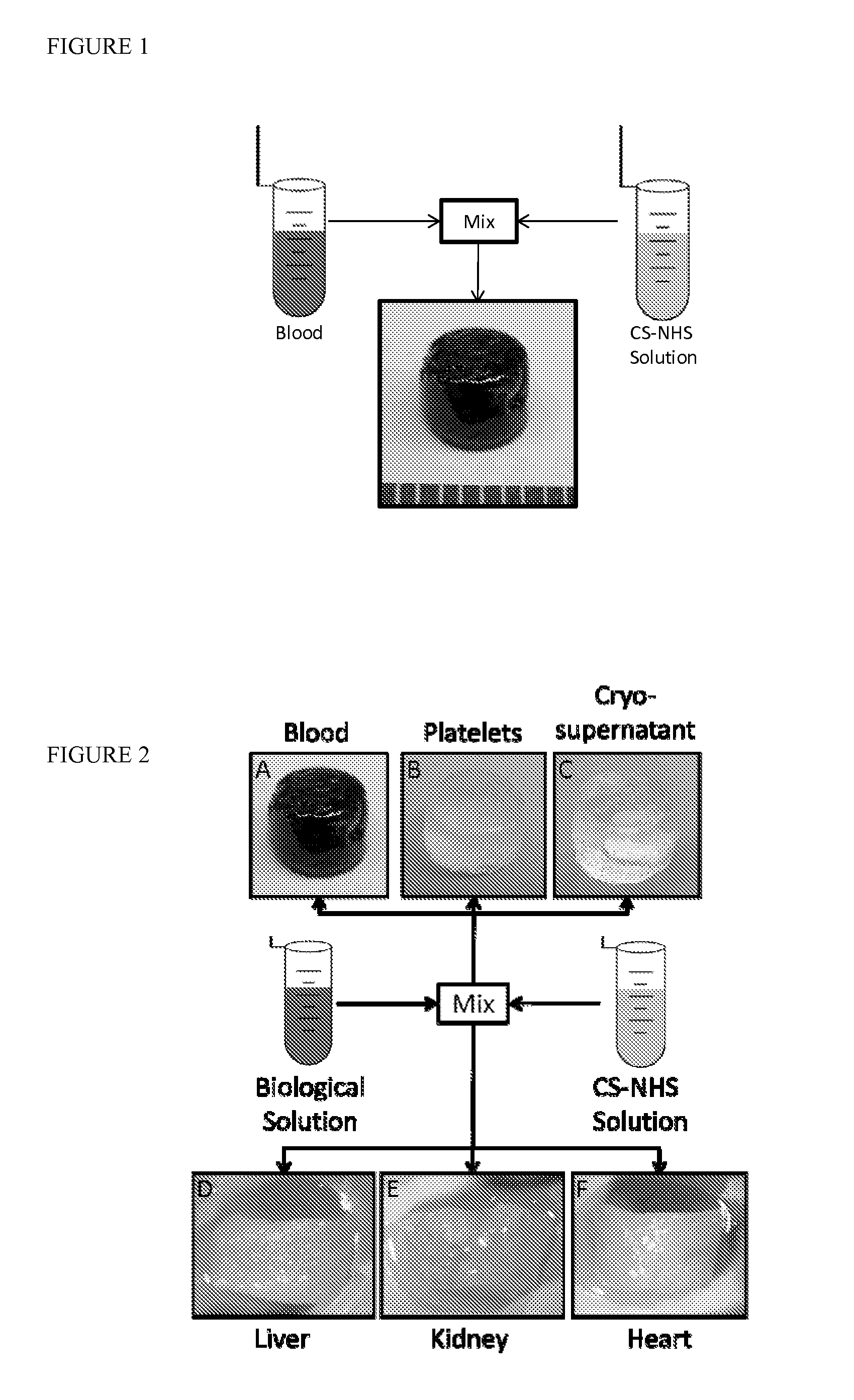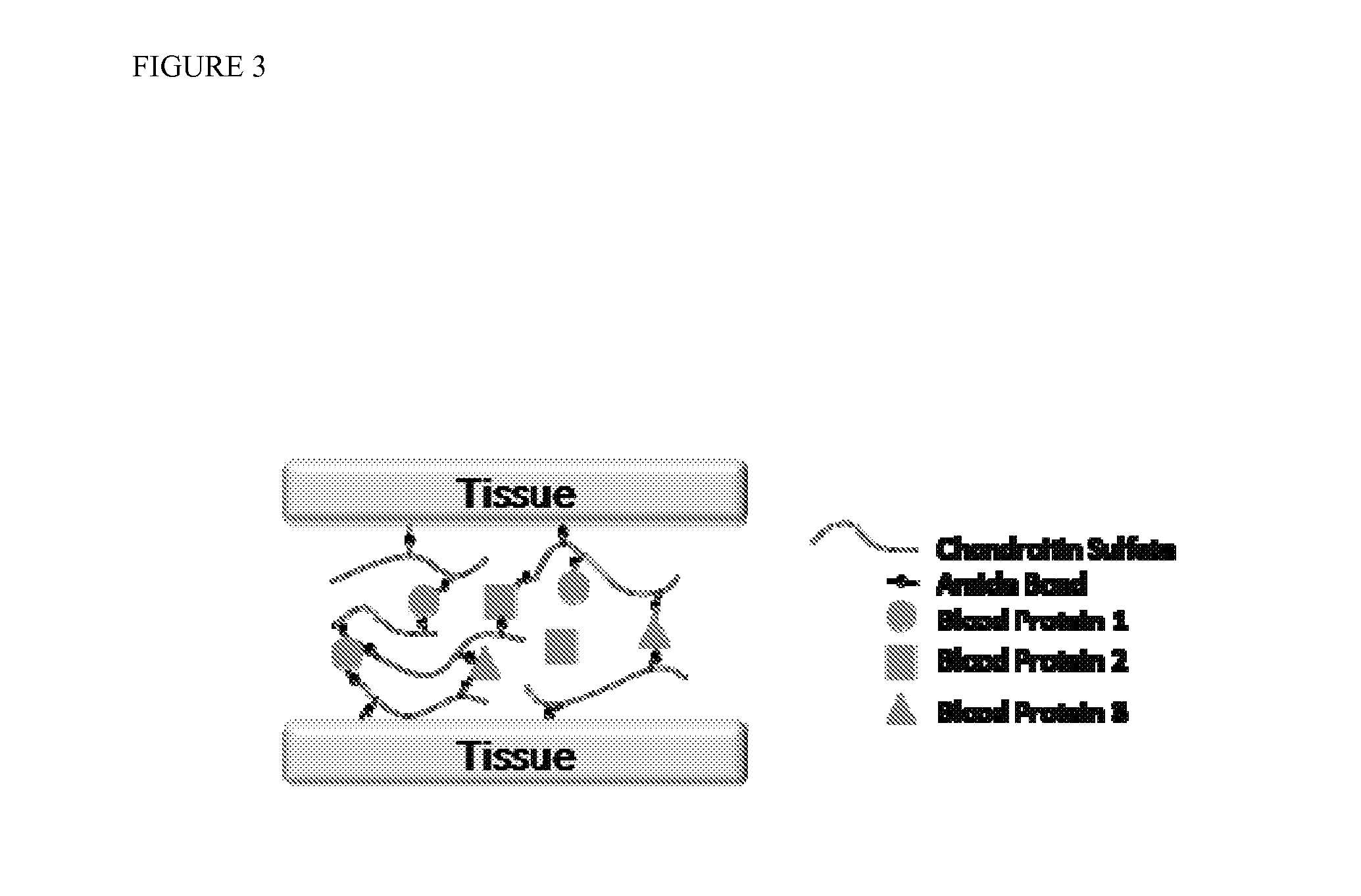Intraoperative and blood derived adhesives
a technology applied in the field of intraoperative and blood derived adhesives, can solve the problems of limited commercially available adhesives, weak adhesive properties of materials, toxic and difficult deformation,
- Summary
- Abstract
- Description
- Claims
- Application Information
AI Technical Summary
Benefits of technology
Problems solved by technology
Method used
Image
Examples
example 1
[0202]The method of CS—NHS synthesis using carbodiimide was as known in the art. The imide derivative significantly improved efficacy and biocompatibility. A CS-amine to act as the amine donor also was synthesized. For example, an about 3:3:1 ratio of CS, succinimide and diimide, respectively, can be reacted in a small volume of saline for a short period of time. A suitable ratio of the three reagents can be about 75:100:38, as a design choice.
[0203]In another embodiment, CS (750 mg) was dissolved in 6 ml: PBS (phosphate buffered saline). 1-Ethyl-3-[3-dimethylamino-propyl]carbodiimide (EDC, 1.572 g, 8.2 mmol) was dissolved in 1.5 ml PBS. A 3.3 mmol solution of N-hydroxysuccinimide (NHS) was made by dissolving 380 mg in 1.5 ml PBS. The NHS solution and the EDC were added to the CS solution, vortexed, and allowed to react for 10 minutes at 37° C. The reaction was then chilled for 30 minutes at −80° C. and precipitated with ethanol. The solution was then centrifuged for 5 min and the s...
example 2
[0212]In this example, a chemically modified glycosaminoglycan (GAG) was used in combination with blood to create a tissue adhesive with tunable physical and biological properties. The mechanical properties and biological composition of the adhesive were varied to control physical and biological interactions. Finally, the ability of stem cells to form new tissue in the hydrogel was evaluated.
[0213]Cell spreading and cell migration through materials is important for regenerating the surrounding tissue and facilitating tissue integration. Commonly, integrin-binding peptides (IBP) such as YRGDS or proteins containing such peptides (i.e., fibronectin and collagen) are added to scaffolds to improve cell spreading and cell migration. However, purified extracellular matrix proteins are relatively expensive and can be difficult to incorporate into scaffolds at high concentrations. Blood, on the other hand, is rich in many proteins with IBP motifs, is readily available, and is naturally in a...
example 3
[0218]Mechanism of gelation and adhesion. A two component, in situ forming biomaterial was created by combining chemically modified chondroitin sulfate (CS—NHS) with blood (FIG. 1). The CS—NHS component reacts with primary amines found on proteins in blood and tissues. Hence, the material is a bioadhesive due to reaction of the CS—NHS with proteins in tissue that covalently anchors the hydrogel to the tissue. Gelation is initiated once the two components are mixed together, and the crosslinks are stabilized via amide bonds (FIG. 2). Thus, a hydrogel forms within a minute and becomes progressively stiffer over a period of 10 minutes. In addition to whole blood, it was observed that the CS—NHS molecule can react with proteins in bone marrow and plasma to form adhesive hydrogels. Therefore, any biological solution containing an adequate number of primary amine bearing polymers (i.e., proteins) can potentially form a bioadhesive when combined with CS—NHS.
PUM
| Property | Measurement | Unit |
|---|---|---|
| v/v | aaaaa | aaaaa |
| v/v | aaaaa | aaaaa |
| v/v | aaaaa | aaaaa |
Abstract
Description
Claims
Application Information
 Login to View More
Login to View More - R&D
- Intellectual Property
- Life Sciences
- Materials
- Tech Scout
- Unparalleled Data Quality
- Higher Quality Content
- 60% Fewer Hallucinations
Browse by: Latest US Patents, China's latest patents, Technical Efficacy Thesaurus, Application Domain, Technology Topic, Popular Technical Reports.
© 2025 PatSnap. All rights reserved.Legal|Privacy policy|Modern Slavery Act Transparency Statement|Sitemap|About US| Contact US: help@patsnap.com



